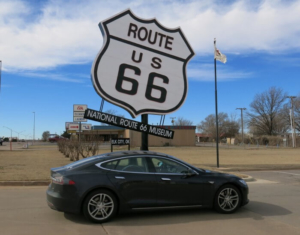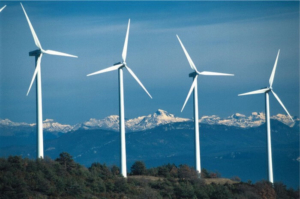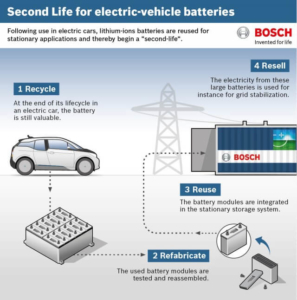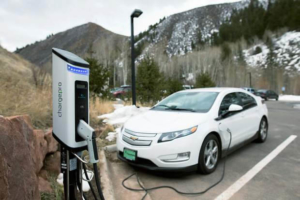Conservation Organizations and Business Groups Commend Plan
Today Governor John Hickenlooper released Colorado’s Electric Vehicle Plan, which outlines a process to electrify the state’s transportation corridors and includes bold goals to further accelerate adoption of electric vehicles (EVs) and ensure Colorado remains a leader in the EV market. This plan represents the next step for the Governor’s July executive order to support Colorado’s clean energy transition and make Colorado a climate leader.
Conservation groups applauded this plan for its goals of almost a million electric vehicles on the road, 500 electric buses, a larger network of charging stations by 2030, and attention to expanding electric vehicle access across the state and urban neighborhoods.
“We’re excited to see Governor Hickenlooper set bold goals for electric vehicles in Colorado. These actions will help cut down on harmful air pollution and move the state toward a healthier future, especially when paired with more renewable energy on our grid. We look forward to learning about the ambitious policies that will make this plan a reality,” said Sophia Guerrero-Murphy, Transportation and Energy Advocate at Conservation Colorado.
“Governor Hickenlooper is taking a bold step forward by setting a target of nearly a million electric vehicles on the road by 2030. This would save consumers over half a billion dollars a year in fuel costs, would drive down electricity rates, saving utility customers $50 million per year, and would have a major impact on cleaner air and lower carbon emissions. Colorado has already adopted the nation’s best tax credit for electric vehicles and begun investing in charging stations. But we will need to increase electric vehicle adoption by a factor of ten to meet this goal. We look forward to working with the state on the legislation, investments, and policies that will be needed,” said Will Toor, Transportation Program Director for the Southwest Energy Efficiency Project (SWEEP).
“We need to eliminate pollution from cars, trucks, and buses. The best way to do that is to move to a 100% electric vehicle transportation system. We applaud Governor Hickenlooper for releasing a plan that highlights many of the steps we need to take. Let’s roll up our sleeves and get moving,” said Danny Katz, Director of CoPIRG (Colorado Public Interest Research Group).
“Colorado leads the nation with the highest tax credits for purchases of electric vehicles, and the EV plan sets the stage for the state to continue to position itself at the front of the pack in the transition to a clean energy economy,” said Matthew Shmigelsky from CLEER/Refuel Colorado.
“Encouraging the rapid transition to electric vehicles is an all-around win for our climate, our public health, and our economy. Coupled with Colorado’s transition to clean energy, electric vehicles offer the promise of 100 percent clean transportation as we move forward. The Colorado Sierra Club applauds Governor Hickenlooper for accelerating our transition to a 21st century clean transportation system,” said Jim Alexee, Director, Sierra Club Rocky Mountain Chapter.
Due to tax credits, Colorado is the cheapest state in the country in which to buy an electric vehicle. As of August 2017, there were 11,238 electric vehicles in Colorado, according to the Zero Emission Vehicle Sales Dashboard.
Electric vehicles are already more efficient than traditional, gasoline engines. They have more power, fewer maintenance needs, and pollute less than a 35 mile per gallon gas car. As Colorado’s energy providers work to bring more renewable energy onto our grid, charging an electric vehicle will pollute less than a car that gets 88 miles per gallon in the next decade. This will result in fewer harmful toxins in our air for everyone.
About Conservation Colorado
Conservation Colorado protects Colorado’s environment and quality of life by mobilizing people and electing conservation-minded policymakers. Learn more at conservationco.org.
About SWEEP
SWEEP is a Colorado based advocacy organization that works to advance energy efficiency in Arizona, Colorado, Nevada, New Mexico, Utah, and Wyoming.
About CoPIRG
CoPIRG Foundation is an independent, non-partisan group that works for consumers and the public interest. Through research, public education, and outreach, we serve as counterweights to the influence of powerful special interests that threaten our health, safety, or well-being.
About CLEER
Clean Energy Economy for the Region (CLEER) develops and delivers creative clean energy programs and services for communities, governments, businesses, and households in western Colorado.
About Sierra Club
With 24,000 members and 80,000 supporters, the Colorado Sierra Club works to promote clean energy, safeguard the health of our communities, protect wildlife, and preserve our remaining wild places through grassroots activism, public education, lobbying, and legal action.


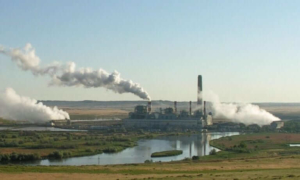 Methane, a potent greenhouse gas, leaks from oil and gas sites across the country, wasting taxpayer dollars and exacerbating climate change. The Bureau of Land Management’s Methane Rule established commonsense standards that require oil and gas companies to deploy readily available, cost-effective measures to reduce methane lost through venting, flaring, and leaks. While the rule itself is still in question, there’s no doubt that Sen. Gardner went against the wishes of most Coloradans and voted to repeal the rule.
Methane, a potent greenhouse gas, leaks from oil and gas sites across the country, wasting taxpayer dollars and exacerbating climate change. The Bureau of Land Management’s Methane Rule established commonsense standards that require oil and gas companies to deploy readily available, cost-effective measures to reduce methane lost through venting, flaring, and leaks. While the rule itself is still in question, there’s no doubt that Sen. Gardner went against the wishes of most Coloradans and voted to repeal the rule.